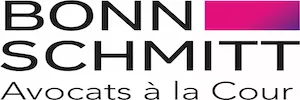After the political agreement reached at European level on July 2023 on the revision of Directive 2011/61/EU on Alternative Investment Fund Managers (AIFMD II), the final text of such revision embedded into Directive (EU) 2024/927 has been adopted by the European Parliament in February 2024 and published in the EU's Official Journal on 26 March 2024 (https://eur-lex.europa.eu/eli/dir/2024/927/oj).
Member States shall transpose it into national law by 16 April
2026.
This revision aims at harmonising existing regulatory practices in
particular as regards to loan origination, at clarifying standards
applicable to delegation arrangements, introduces non-core services
extension and additional provisions regarding liquidity risk
management and depositary and custody services.
KEY CHANGES
1. New framework for loan origination activities
AIFMD II introduces comprehensive requirements for AIFMs that manage AIFs engaged in lending operations. These requirements encompass effective policies, procedures and processes for granting loans, for assessing credit risk and administering and monitoring the credit portfolio, introducing borrower concentration limits, leverage limits, prohibitions on extending credit to specific entities, retention of loan notional value (avoiding originate-to-distribute strategies).
2. Delegation and reporting
In order to develop a reliable overview of the delegation activities in the EU, AIFMs are requested to provide their national competent authority with more exhaustive information on the delegation and sub-delegation arrangements put in place. Such information shall be provided when applying for an authorisation as AIFM and periodically for regulatory reporting purposes.
3. Non-Core Services Extension
A notable addition to AIFMD II is the extension of non-core services that AIFMs may provide. These now include benchmark administration and credit servicing, aligning with evolving market demands and practices.
4. Reporting obligations
In order to ensure the harmonisation of supervisory reporting obligations and standardise the supervisory reporting process, ESMA is empowered to develop draft regulatory technical standards (RTS) implementing technical standards (ITS) replacing the current reporting template.
5. Liquidity Management Tools
AIFMD II recognises the importance of effective liquidity risk management and introduces a list of liquidity management tools for AIFMs managing open-ended AIFs to enable them to deal with redemption pressures under stressed market conditions.
AIFMD II specifies that AIFMs are required to select at least two appropriate liquidity management tools from such list which shall be suitable in relation to the AIF's investment strategy, the liquidity profile and the redemption policy. Such tools have to be included in the AIF's rules or instruments of incorporation.
6. Enhanced cross-border possibilities for depositaries
AIFMD II introduces the possibility for each home member state to enable national competent authorities to allow depositaries established in another EU member state to be appointed as depositary if, among others, the AIFM can demonstrate the lack of the relevant depositary services in the home member state of the AIF, having regard to its investment strategy. It has to be noted that the appointment of a depositary established in another member state will not be automatic, as national authorities shall take that decision only after a case-by-case assessment on the lack of relevant depositary services in the home member state.
7. Depositary regime
Central securities depository (CSD) will be included in the custody chain when providing custody services in order to ensure a stable information flow between the custodian and the depositary. Furthermore the depositaries of an AIF shall not perform ex-ante due diligence where they intend to delegate the custody of assets to CSDs.
8. Harmonisation with UCITS
The AIFMD II legislative package includes comparable changes at level of directive 2009/64/EC on undertakings for collective investment in transferable securities (UCITS), in particular regarding delegation and reporting, liquidity management tools and the depositary regime.
The content of this article is intended to provide a general guide to the subject matter. Specialist advice should be sought about your specific circumstances.


